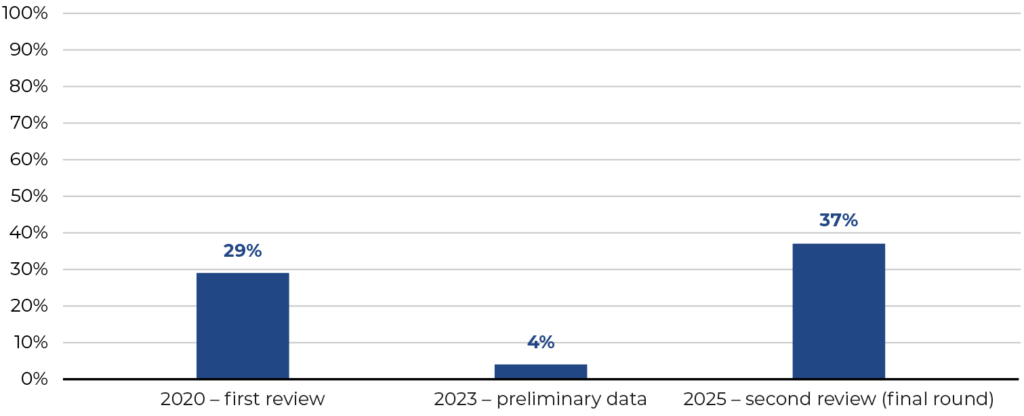UK aid transparency has improved, but the Home Office is not transparent about its ODA spending
The transparency of aid spending government departments has improved, according to a new assessment from Publish What You Fund. However, the review highlights the Home Office as the only department which has become less transparent over the last five years – despite spending £2.3 billion of the UK’s aid budget in 2024.
“Progress and Gaps: Transparency of UK Aid Beyond the FCDO”, commissioned by the UK government, provides a tailored assessment of the transparency of Official Development Assistance (ODA) spending by nine UK government departments, other than the Foreign, Commonwealth and Development Office (FCDO). It shows that the visibility of ODA spending has increased since the last review of 2020, but highlights a significant dip in the intervening years, suggesting that aid transparency needs long term attention.
An increasing share of the UK‘s £14 billion ODA budget is being managed by non-FCDO departments – much of this driven by the amount of aid spent in the UK on support for asylum seekers and refugees, such as housing and education. The departments in the review spent 30% of the UK’s ODA budget in 2024, 62% of which was spent on in-donor refugee costs.
The review analysed how aid transparency has changed since the departments were last assessed, providing guidance to the departments on how to improve the quality and quantity of data they publish. It found that most departments have progressed in their aid transparency:
- Eight departments maintained their level of transparency or made significant gains publishing new or larger amounts of data. These were Department for Education, Department for Energy Security and Net Zero, Department for Environment, Food and Rural Affairs, Department for Science, Innovation and Technology, Department for Work and Pensions, Department of Health and Social Care, Integrated Security Fund, and Ministry of Housing, Communities and Local Government.
- The Home Office was the only department to show a decline in its aid transparency, publishing less data in 2024 than in 2020. It made no 2024/25 updates and published no forward-looking activities. The Home Office is the second largest spender of ODA (after the FCDO), 99% of which is spent on in-donor refugee costs, though it does also provide some international aid.
Gary Forster, CEO of Publish What You Fund, said:
“The last five years have been a turbulent time for UK aid – with major budget cuts and changes in strategic direction – which have caused huge uncertainties. So it’s welcome news that aid transparency has improved. But we still have a long way to go to see full visibility of how the UK spends its aid.”
“Most departments which spend ODA to support refugees in the UK have progressed on their transparency. The exception is the Home Office which is not being transparent about how it spends ODA. Transparency matters because UK taxpayers should be able to scrutinise how UK aid is spent, hold the government accountable for its promises, and trust in its deployment. And aid recipients – particularly those in the global south – should be able to plan for what funding is, and isn’t, available to them.”
Minister for Development Jenny Chapman said:
“How we spend the aid budget, on behalf of the British public, is very important to this government. I am committed to making sure that our aid spend has maximum impact, whilst also being transparent and making sure it is crystal clear how we spend taxpayer’s money.”
During the 2025 review process, the departments published an additional 500 activities valued at £468 million in the International Aid Transparency Initiative (IATI) Standard. This means that 37% of their ODA spending is now visible in IATI (the leading standard in aid transparency). If the Home Office is excluded, the visibility jumps to 83%.
It shows an increase from 29% at the time of the last UK aid transparency review. However, between the reviews (2023) the visibility of non-FCDO ODA spending had fallen to just 4%.

So while the latest review has successfully encouraged greater aid transparency, the UK government should institutionalise the continuation of these practices in the longer term.
Other recommendations from the review include:
- Departments spending ODA internationally should publish more procurement and results data, and impact evaluations. Results and impact data helps stakeholders to understand if and how aid is effective and increases public trust.
- The UK government should do more to enable and promote the publication of forward-looking budgets and procurement information for domestic ODA spending.
The review can be downloaded here.

